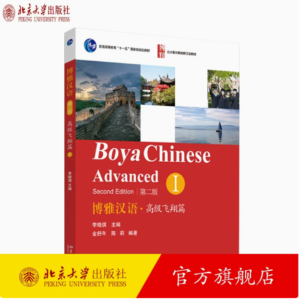Kuaile Hanyu
Kuaile Hanyu
Introduction to Kuaile Hanyu (Happy Chinese) Textbook Series
The Kuaile Hanyu (Happy Chinese) textbook series is a renowned international Chinese language program designed for students aged 11-16. Here’s a concise overview:
- Structure: Comprises three levels (First, Second, and Third), with each level containing textbooks, teacher’s books, and exercise books.
- Content:
- Topics: Covers a wide range of topics from daily life to cultural experiences, relevant to students’ interests.
- Language Skills: Enhances listening, speaking, reading, writing, and translation skills through structured lessons.
- Vocabulary & Grammar: Progresses from 180 characters and 171 words in the first level to more complex content in subsequent levels.
- Teaching Methodology:
- Interactivity: Incorporates interactive elements like games, songs, and puzzles to make learning enjoyable.
- Cultural Integration: Introduces cultural points throughout the lessons, fostering cultural awareness.
- Step-by-Step Approach: Builds upon previous knowledge in a spiral-ascending manner, ensuring gradual progress.
- Awards & Recognition: Has been recognized as a highly popular and effective international Chinese language textbook, awarded “Most Popular” in 2006.
- Resources: Includes supplementary materials such as CDs, CD-ROMs, and online resources to support teaching and learning.
In conclusion, Kuaile Hanyu offers a comprehensive, interactive, and culturally enriched Chinese language learning experience for young learners, promoting language proficiency and cultural understanding.
Course(Textbook) Introduction
Introduction to “Kuaile Hanyu” Textbook
The “Kuaile Hanyu” textbook series is specifically designed for non-native Chinese learners, with a focus on piquing their interest in the language and Chinese culture while providing a solid foundation for communication in Chinese. Developed by the Chinese Language Council International (Hanban) and the British Council, this textbook series has gained widespread popularity globally. It was awarded the honorary title of “The Most Popular International Chinese Language Textbook of 2006” and is edited by Professor Li Xiaoqi of Peking University, with contributions from several senior Chinese education experts.
Content and Structure
The “Happy Chinese” textbook covers a wide range of topics, including daily life, school life, cultural customs, and more. It aims to develop students’ listening, speaking, reading, writing, and translation skills through authentic contextual scenarios. The series is divided into three levels (Books 1, 2, and 3), with each level consisting of a student textbook, teacher’s guide, and workbook. Each book contains 24 lessons, with approximately 4 hours of classroom time per lesson, totaling 90-120 hours per book. Each lesson follows a structured format, including the text, vocabulary, sentence patterns, and exercises, providing a systematic approach to mastering Chinese grammar and vocabulary.
Features and Advantages
The “Happy Chinese” textbook series is renowned for its lively and engaging content. It utilizes colorful illustrations and images to visually demonstrate common expressions and conversational scenarios, sparking students’ interest in learning. The task-based approach, where each lesson revolves around a specific task such as shopping, asking directions, or introducing people, allows students to apply their language skills in practical situations, experiencing the value and joy of communication. Moreover, the textbook emphasizes cross-cultural awareness, introducing courses on traditional Chinese culture, customs, and festivals, fostering a deeper understanding and respect for cultural differences.
Teaching Resources and Support
The “Happy Chinese” textbook series offers comprehensive teaching resources, including teacher’s guides, workbooks, and CD-ROM multimedia software. These resources provide convenience for teachers in lesson preparation, teaching, and assessment, while also offering students diverse learning methods and practice opportunities. Additionally, teaching demonstration videos, sample lesson plans, and other resources are available to assist teachers in grasping teaching methods and techniques.
Improvements and Future Development
While the “Happy Chinese” textbook series boasts numerous advantages in teaching philosophy, modes, and content, there are still areas for improvement. For instance, some exercises in the textbook tend to be repetitive and straightforward, which may cause students to feel bored after mastering basic grammar and vocabulary. Moreover, the available teaching resources are relatively limited, requiring teachers to design additional materials and activities based on students’ specific needs and characteristics. Therefore, future editions of the “Happy Chinese” textbook series should aim to refine and enrich the exercise content, while expanding the teaching resources to meet the diverse learning needs of students.





